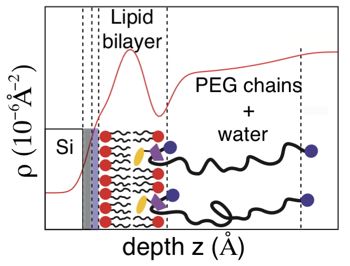
Figure 1: The SlidTetherLig project has a double ambition: i) to deliver a new family of biotechnological tools for building soft nanointerfaces and ii) to open new perspectives in stealth liposome technology by self-assembling a new type of stealth liposomal vector for drug delivery.
SlidTetherLig is an ANR funded collaboration project between Mcube and Lions in Saclay that proposes a new paradigm for the design of tethered ligands by introducing sliding grafts that will allow for unprecedented adaptability of the spacer length. The design is based on the sliding character of the topological complex formed by a polymer and a ring; it gives rise to a new category of tethered ligand- receptor interactions. These new objects are expected to allow finely tuning the binding kinetics and the interaction force range in the many different systems where ligand-receptor interactions play a determinant role.
The SlidTetherLig project has so far delivered cyclodextrin rings with one or two attached cholesterol molecules that anchor very effectively the construct to bilayers or to monolayers at the air water interface. Inclusion complexation with POE polymers and end-capping has also been achieved.
- Sliding tethered ligands add topological interactions to the toolbox of ligand–receptor design
Bauer, M.; Kékicheff, P.; Iss, J.; Fajolles, C.; Charitat, T.; Daillant, J.; Marques, C.M.
Nat. Com. 2015, 6, 8117
- Membrane insertion of sliding anchored polymers
Bauer, M.; Bernhardt, M.; Charitat, T.; Kékicheff, P.; Fajolles,C.; Fragneto, G.; Marques, C.M.; Daillant, J.
Soft Matter, 2013, 9, 1700.
- Insertion properties of cholesteryl cyclodextrins in phospholipid membranes: a molecular study
Bauer, M.; Charitat, T.; Fajolles, C.; Fragneto, G.; Daillant, J.
Soft Matter, 2012,8, 942-953
- Amphiphilic behavior of new cholesteryl cyclodextrins: A molecular study
M Bauer, C Fajolles, T Charitat, H Wacklin, J Daillant
The Journal of Physical Chemistry B 2011, 115 (51), 15263-15270
